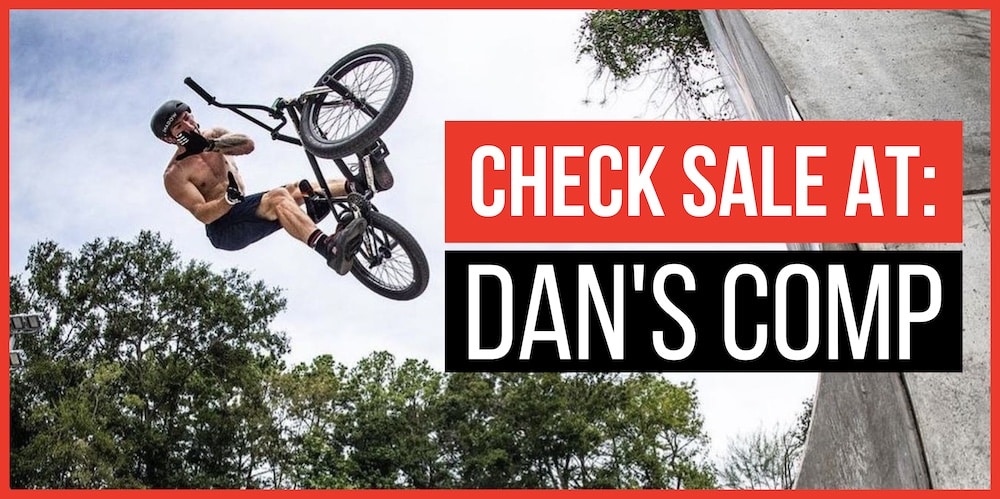Are you also interested in knowing what’s the best BMX sprocket size for quick and easy acceleration?
Your choice in sprocket size can be the key to easier acceleration and quicker movements.
This is especially important for technical street (and park) riders and flatlanders.
My quick answer for the optimal sprocket size for easy acceleration is 25T.
Of course, this size is ideal if you have a 9T rear cog, which most modern cassette hubs and freecoasters have.
But can you also ride a 23T or a 24T sprocket?
Let’s together explore the best BMX sprocket sizes for riders who want faster starts and snappier acceleration.
This post covers:
- Why smaller BMX sprockets boost acceleration
- Ideal BMX sprocket size(s) for acceleration
- Pros & cons of smaller BMX sprockets
- Conclusion: 25T BMX sprocket is optimal!
Why Smaller Sprockets Boost Acceleration
It all depends on how much energy is required to turn the pedals.
With a smaller BMX sprocket, you reduce the force needed with each pedal stroke, making it much easier to pick up speed quickly.
A smaller sprocket and a smaller rear driver create a lower gear ratio.
This is particularly useful for street riders who need quick bursts of speed to nail technical tricks or approaches to obstacles.
A lower gear ratio from a smaller sprocket lets you hit your peak speed faster.
The trade-off, of course, is that lower gear ratios don’t maintain high speeds as effectively.
Also, if you need to pedal for fifteen, twenty, or even more minutes to get to your favorite spot to shred, a too-low gear ratio will get you nowhere.
Okay, you’ll eventually get there, but you know what I mean.
However, since you are here to learn about the best BMX sprocket for easier acceleration, high speeds don’t matter to you.
But you still need to get to the spot. (Hint: Don’t pick a 23T or a 24T sprocket if you’re a street rider.)
Ideal BMX Sprocket Size(s) For Acceleration
Now, let’s talk about specific sizes.
25T Sprocket
The 25T sprocket is a favorite among BMX street riders. It offers an ideal balance of acceleration and a manageable top speed.
When paired with a 9T driver, it has a gear ratio well-suited for quick starts and fast bursts.
The 25T setup is responsive without making the bike feel underpowered.
Many riders find it’s just right for most street tricks (even when clearing larger stair sets), providing enough control without sacrificing pedal ease.
23T & 24T Sprocket
The 23T or 24T sprocket is the go-to for riders who want the quickest, most effortless acceleration.
The 23T/24T paired with a 9T driver creates a very low gear ratio, making pedaling incredibly easy.
This is way better if you’re a flatland rider and not really optimal for street riders.
However, some technical street riders enjoy being light and quick on the pedals.
Remember that this setup will give you an even lower top speed than the 25T.
I don’t recommend it unless you really want to do your thing and think that such a small BMX sprocket is the right option for you.
28T & 30T Sprockets
Unfortunately, the option to run a 28T or a 30T front sprocket for quick acceleration is very limited (with a 9T rear cog).
However, Profile Racing has some really solid rear hub options where you can pick a 10T or even 11T rear driver.
Because a 28T or 30T front sprocket won’t work for easier accelerations in combination with a 9 T rear cog.
On the other hand, if you need quick acceleration, you’re likely a technical street rider, which means a larger rear driver (10T or 11T) will get in the way.
Sure, you can get a hub guard to protect it and run a front sprocket with a guard, but still, I don’t think it’s worth complicating things.
Just go with a 25/9 gear ratio – you’ll thank yourself later.
I’ve been running the 28/9 for quite some time, but I switched to 25/9 just because it’s easier to pedal, and I don’t often need high top speed in my riding.
Pros & Cons Of Smaller BMX Sprockets
To help you decide, here’s a quick breakdown of the pros and cons of going smaller with your BMX sprocket:
Pros
- Easier pedaling: Less effort is required with each pedal stroke so that you can accelerate faster.
- Quicker acceleration: Ideal for street and park riding where responsiveness is key.
- Reduced weight: Smaller sprockets can make your bike feel lighter overall.
Cons
- Lower top speed: You might max out your speed sooner with a smaller sprocket, so it’s not as ideal for long, fast rides.
- Stability at high speeds: Larger sprockets provide a smoother, more stable feel when riding at high speeds on trails.
Conclusion: 25T BMX Sprocket Is Optimal!
Choosing the best BMX sprocket size comes down to your riding style and goals.
For easier acceleration, smaller sprockets (23T – 25T) provide the pedal ease and quick bursts that street riders crave.
However, please don’t complicate your life with going below the 25 tooth mark.
I rode a 24T sprocket for at least a year, but it did me no good.
I later switched to 28T but now settled with the 25T because it works the best for my style of riding.
Ultimately, experimenting and finding what feels right for your riding will make the biggest difference.
But in short, stick with the 25/9 gear ratio for easy acceleration and focus on riding and having fun instead.
Further reading:
- Best 25T BMX sprockets
- How BMX sprockets impact grind tricks?
- Bent BMX sprocket (worth fixing?)
- BMX sprocket maintenance (6 tips!)
- Will a sprocket fit my BMX bike? (how to know)






